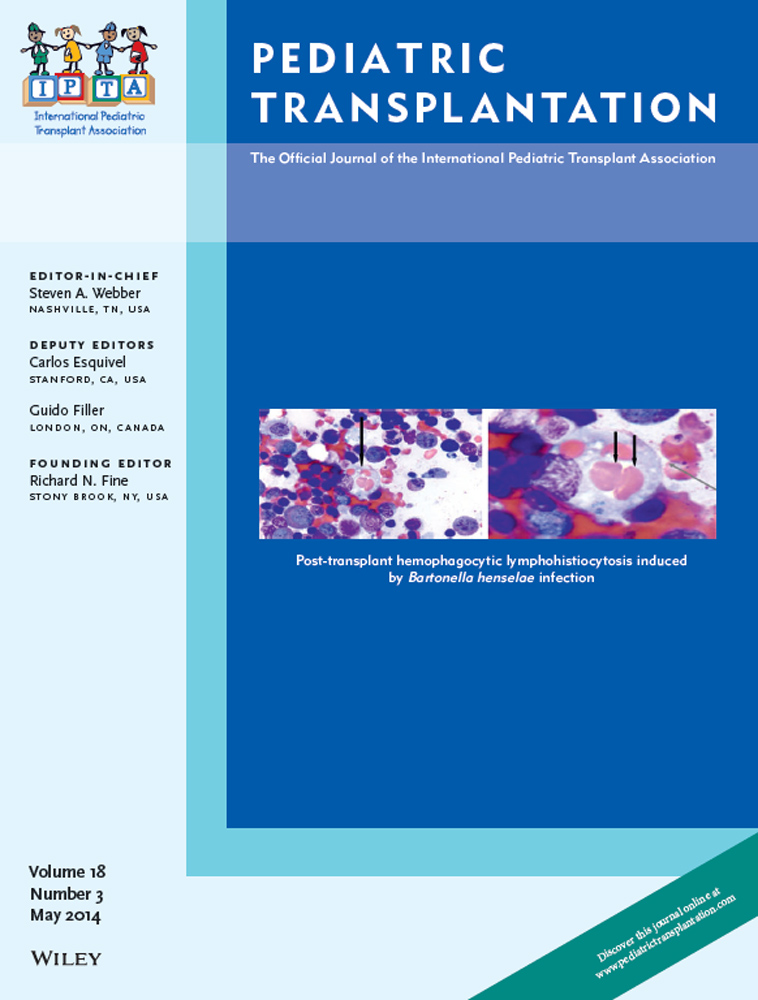Reduced ATG-F dosage for induction in pediatric renal transplantation: A single-center experience
Abstract
Rabbit antithymocyte globulin (ATG-F) is an extensively used induction agent. To our knowledge, no study to date has assessed reduced ATG-F dosage in children undergoing renal transplantation. This was a retrospective analysis of pediatric renal recipients in the Department of Kidney Transplantation, The First Affiliated Hospital of Zhengzhou University, from May 2007 to February 2013. Thirty-nine children underwent renal transplantation including 25 living related and 14 cardiac deceased donor transplantation. Each recipient received ATG-F 1.5 mg/kg/d once daily for 4 days. Of the 39 recipients, five (12.8%) showed delayed graft function, including one of 25 recipients (4%) of living donor and four of 14 recipients (28.6%) of deceased donor transplantation (p < 0.05). Six of the 39 recipients (15.4%) showed acute rejection on renal biopsy. Follow-up in these children ranged from 6 to 87 months. The one-, three-, and five-yr recipients and grafts survival rates postoperation were each 94.9% and 97.3%, 97.3%, and 94.6%, respectively. The incidence of postoperative infection was 35.9% (14/39), and did not differ significantly in the living related and deceased donor groups (p > 0.05). Low-dose ATG-F can be safely used as an immune induction agent in pediatric renal transplantation.




